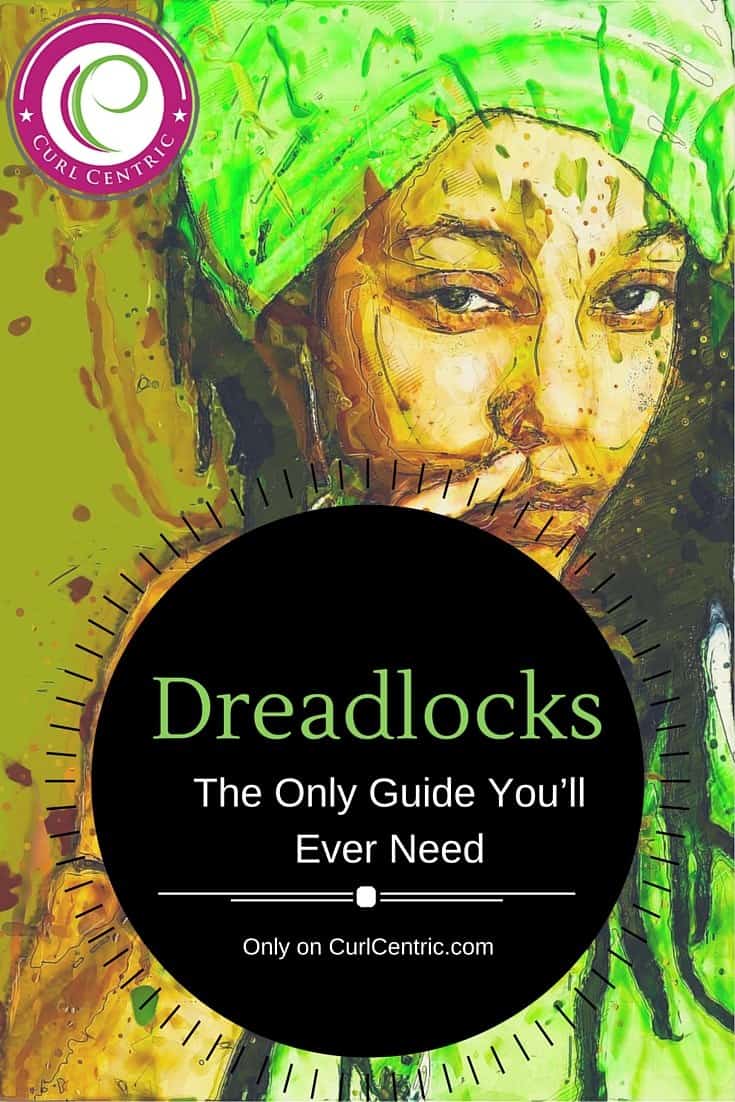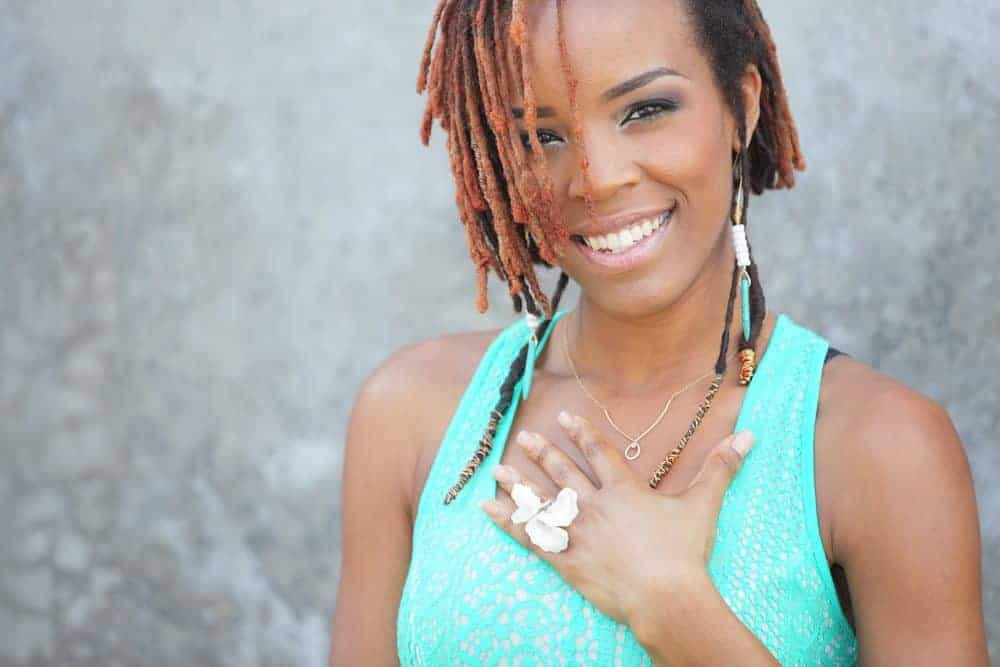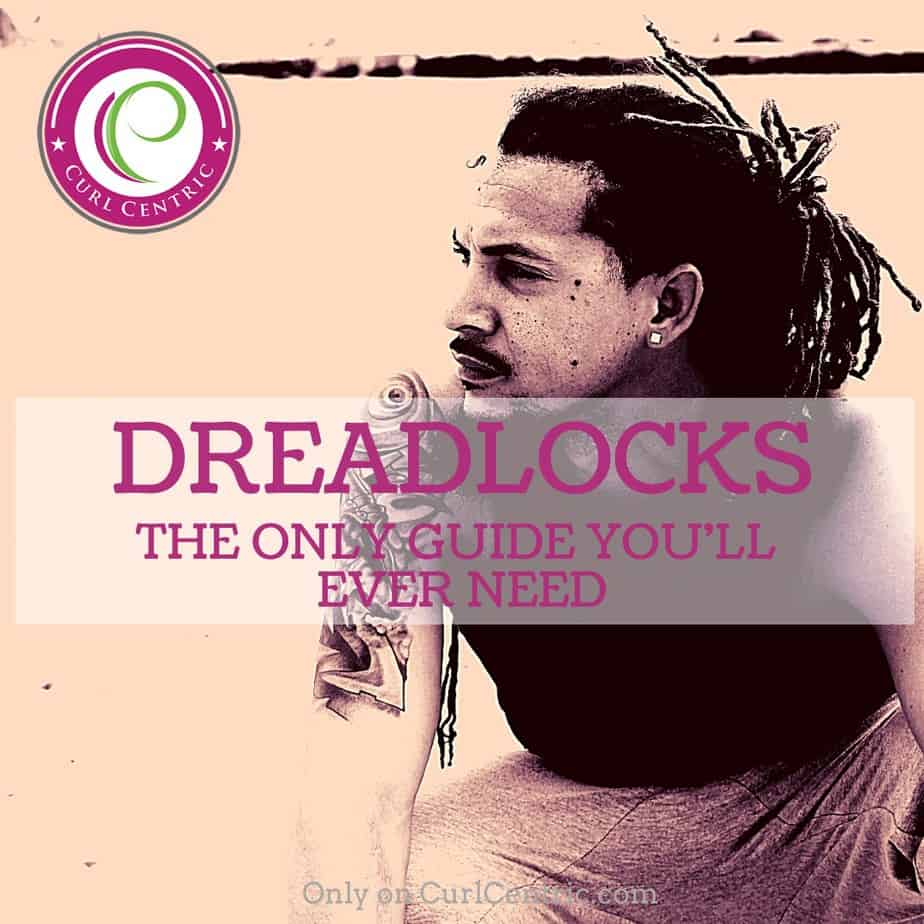
Dreadlocks are ropes of hair. This style is also known as Jata, Sanskrit, dreads, or locs, which all use different methods to encourage the formation of the locs such as rolling, braiding, and backcombing.
On the surface, dreadlocks are “free-formed” locs of hair (i.e., hair locks).
There is a common misconception that dreadlocks are dirty. In reality, they are not dirty at all. The process of keeping the hair clean and in good condition is important to have healthy dreadlocks.
Dreadlocks also have a deep affiliation with the African and Rastafarian religion and lifestyle.
Note, that just as straight, curly, and short styles vary among the mass population, dreadlocks are no different. The way that a person chooses to wear their hair is a personal choice.
Table of Contents
- 1 The History of Dreadlocks, Origin, and the Cultural Significance
- 2 The Revival of Dreadlocks: A Hair Movement
- 3 Dreadlocks Today and Sports
- 4 Dreadlocks: Step-by-step Video Tutorial
- 5 Recommended Hair Care Products
- 6 How to Make Dreadlocks for Type 1 or Type 2 Hair Types
- 7 How to Get Faux Dreadlocks Tutorial
- 8 Dreadlock Hairstyles with Pictures
- 9 1. Neat Skinny Ombré Dreadlocks
- 10 2. Classic Dreadlocks Style
- 11 3. Chic Dreadlocks
- 12 4. Short Natural Dreads
- 13 5. Long Textured Dreads on Type 4 Hair Type
- 14 6. Young Blonde with Dreads
- 15 7. Free, Long Dreads on Type 1 Hair
- 16 Frequently Asked Questions
- 16.1 What Are Dreadlocks?
- 16.2 What Are Locs?
- 16.3 Are the Terms Locs and Dreadlocks Interchangeable?
- 16.4 How Long Will It Take My Hair to Lock?
- 16.5 How Long Does My Hair Have To Be To Start Dreadlocks?
- 16.6 What Is the Best Way To Make Locs Uniform?
- 16.7 How to Size Locs or Dreadlocks?
- 16.8 Can You Remove Dreadlocks or Locs?
- 16.9 Which Locking Techniques Are Easier To Take Down Later?
- 16.10 Can You Wash Dreadlocks?
- 16.11 What Products Should I Avoid With Dreadlocks or Locs?
- 16.12 What Type of Products Should I Use On My Dreadlocks?
- 16.13 How Do I Make My Dreadlocks or Locs Grow Faster?
- 16.14 Questions To Ask the Loctician?
- 16.15 What Are the Most Popular Cities for Dreadlocks?
- 17 The Stages of Dreadlocks
- 18 9 Critical Dreadlock Tips
- 18.1 What Are Fake Dreads Called?
- 18.2 What Are Braided Dreads Called?
- 18.3 What Are the Beads in Dreads Called?
- 18.4 What Are Congo Dreads?
- 18.5 What Are Wick Dreads?
- 18.6 What Are Freeform Dreads?
- 18.7 What Are Small Dreads Called?
- 18.8 What Are Partial Dreads?
- 18.9 What Are Florida Dreads Called?
- 18.10 What Are the Metal Things on Dreads?
- 18.11 Related Articles
- 19 How to Get Dreadlocks
The History of Dreadlocks, Origin, and the Cultural Significance
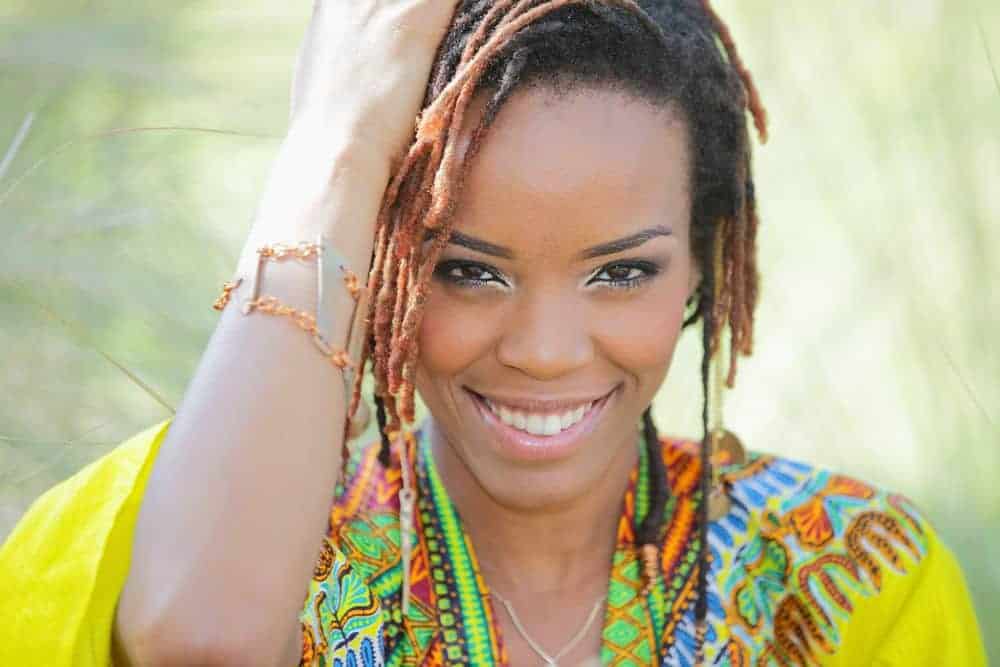
Several different African ethnic groups wear dreadlocks. Although, the significance could change from group to group.
The Maasai warriors are easily recognized by their long, red, thin dreadlocks. Some people, familiar with the thin dreads worn by Maasai warriors, will dye their hair with red ochre or root extracts to get the desired look.
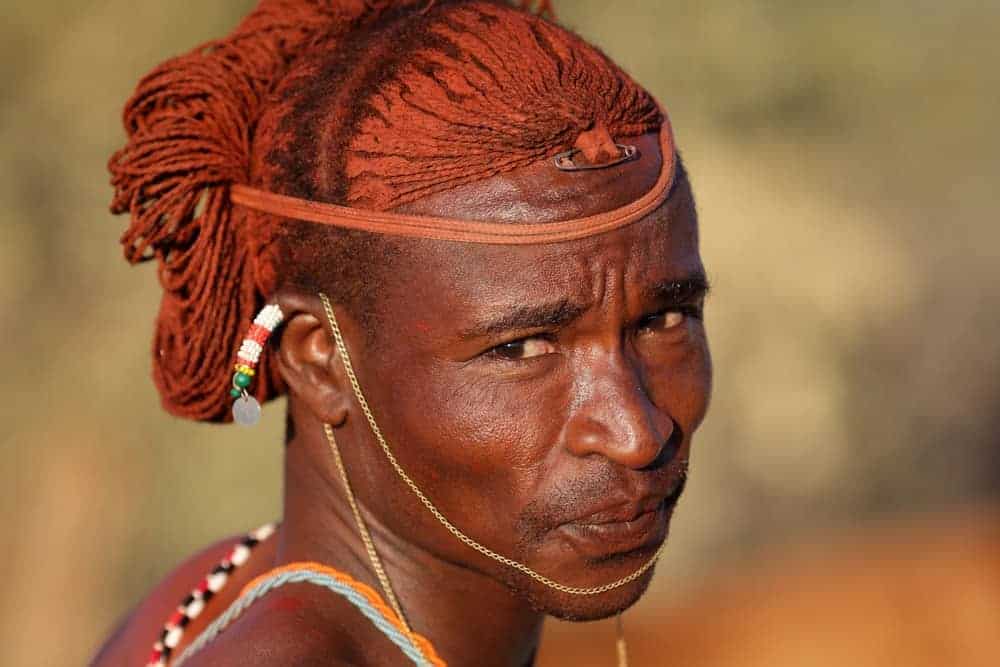
In different cultures, Shamans wear dreadlocks. These are the women or men that claim to speak and serve deities and spirits.
Children in Nigeria, born with naturally locked hair, are called Dada. Priests in Yoruba also wear dreadlocks. Turkana people of Kenya and the Akomofoo priests wear their hair in locs.
Dreadlock styles were adopted by the Rastafarians (Ras Tafari), with roots that date back to when slaves were traded in Jamaica.
The Rastafari dreadlocks symbolize the Lion of Judah, many times located in the center of the Ethiopian flag.
The Rastafari believe that Haile Selassie (Ras Tafari) is a direct descendant of King Solomon and Queen of Sheba by way of their son Menelik.
Marcus Garvey, a Jamaican political leader, has also been credited as the founder of the Rastafari Movement, starting in Jamaica in the 1930s. Garvey promoted black power and empowerment during his teachings.
Some people think that the Nazarites of the Bible inspired the dreadlocks that Rastafarians wear. Note that all Rastas wear locs; Leonard Howell is an example of a popular Rasta that decided not to wear dreadlocks.
Furthermore, in the Old Testament, some interpretations suggest that Samson had locs, when Delilah cuts them Samson loses his unsurpassed strength.
Finally, some people would suggest that the God Shiva, also known as the God of Destruction, wore locs inspiring people that follow Shiva to follow suit in India.
The Revival of Dreadlocks: A Hair Movement
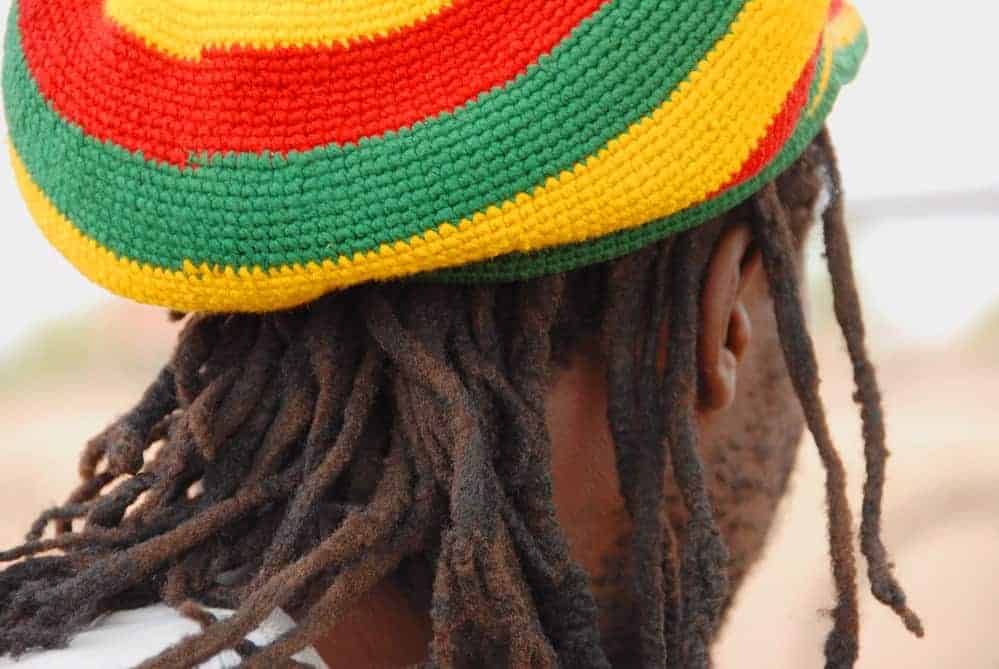
Bob Marley, Whoopi Goldberg, Bert Ashe, and More
This newly fashionable hairstyle was being worn by musicians, athletes, actors, rappers, authors, and many others. Bob Marley popularized the look of dreadlocks in mainstream culture when he hit the world stage with his music.
Whoopi Goldberg, in the 1980s, also helped popularize dreadlocks. Lauryn Hill and Lenny Kravitz rocked their dreadlocks in the ‘90s. People began wearing dreadlocks more for the style than cultural or religious reasons.
Nowadays, celebs and recognizable names like Lisa Bonet, Wiz Khalifa, Kelela, Future, Willow Smith, Stevie Wonder, Toni Morrison, Bert Ashe from the University of Richmond, Wale, Richard Sherman, Ani DiFranco, and many others wear dreadlocks.
Dreadlocks have also been the source of controversy with some stars. For reference, read this story about the controversy between Giuliana Rancic made about Zendaya.
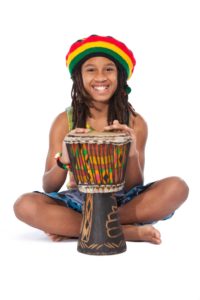
When the Rasta style gained in popularity, the beauty and fashion industries jumped on the bandwagon.
These industries were hoping to capitalize financially, as the popularization of dreadlocks was seen as a new black hair movement by many in the beauty industry.
Suddenly new lines of hair care products were developed for use in salons. Many of these salons catered almost entirely to a white clientele, sparking a debate on cultural appropriation.
These upscale salons offered their customers a variety of hair care products for dreadlocks.
These products ranged from shampoo, wax, hats, and jewelry.
The hairstylists, working at these salons, started creating a variety of different modified or artificial locs, including extensions, multi-colored synthetic locs, and dread perms that utilized certain chemicals to treat the hair.
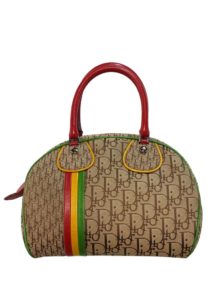
Models began wearing dreadlocks and appeared in numerous fashion shows. Stores began promoting Rasta clothing that had a unique Jamaican look.
Brands like Christian Dior designed a Rasta-inspired line. It was worn at many fashion shows by models sporting their new dreadlocks.
Also, it's no longer uncommon to see someone wearing dreadlocks on a television commercial or advertisement.
Dreadlocks gained popularity in the West among the Hippies, (1990 to today). Locs were also popular with New Age Travelers, Crust Punks, Goths, and members of the Rainbow Family.
People from these unique cultures wore dreadlocks for very similar reasons, mass-merchandising, rejection of their government, or just to fit in with a crowd.
Different members of the cyber-goth culture wore artificial dreadlocks made of fiber, plastic, or synthetic hair. These locs, often referred to as faux locs, are still very popular.
During the late 1990s and the early 2000s, dreadlocks became a popular trend down in southern states, like Louisiana and Alabama.
Different elements were incorporated in the hairstyles like flat twists, where sections of the hair are rolled barreled to look like cornrows, or simply braiding the dreadlocks.
Different examples of these variations included the flat-twisted Mohawk style, flat-twisted half-back style, braid-outs, and braided buns.
People who wanted to share ideas about their unique hairstyle hit the internet via video blogs, social media, forums, and YouTube.
Some people even started new beauty blogs dedicated to sharing their dreadlock journey.
These people were able to share styling tips, create tutorials for braiding the hair, and show pictures of their hair.
Dreadlocks Today and Sports
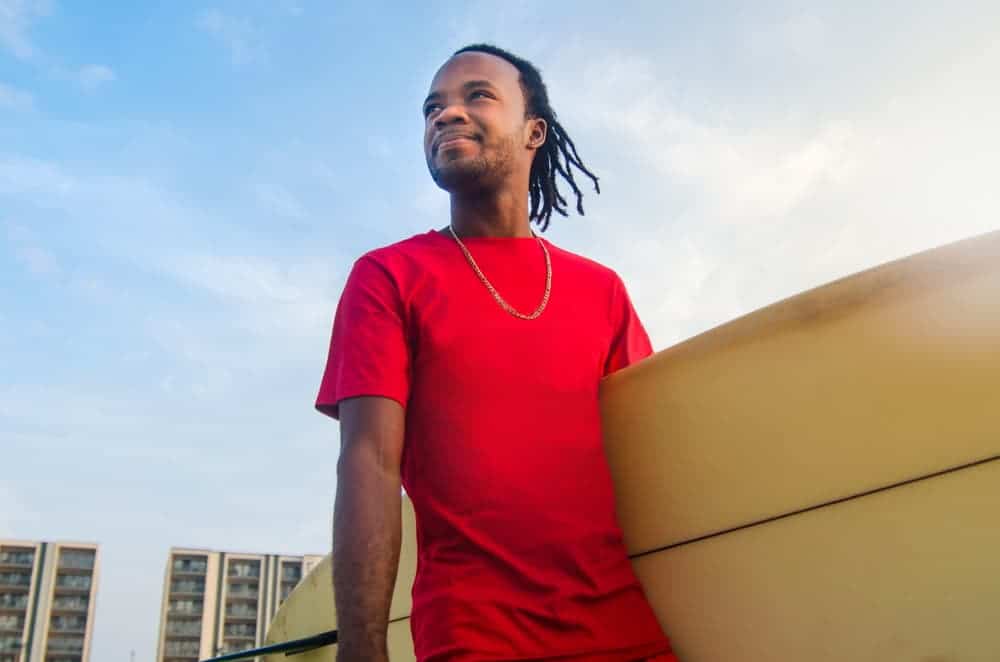
The majority of professional sports players that are wearing dreadlocks are of African-American descent. However, white athletes like US soccer sensation Kyle Beckerman have begun sporting the dreadlocks look.
Since Ricky Williams started wearing dreadlocks back in the 90s, the trend has exploded. Many players now can be seen on the football field wearing locs.
In 2012, there were over 180 players in the NFL wearing dreadlocks.
Historically, defensive players are more likely to wear dreadlocks. Defensive players are less likely to be tackled by their hair.
Unfortunately, football players who wear long dreadlocks are at risk of easily being tackled by their hair. Dreadlocks can give the other team a competitive advantage because the hair is often easy to grasp.
Currently, the NFL does not have a rule against tackling a player by their hair. It is considered to be a part of the uniform.
If a player understands the risks and decides to wear locs while playing football, they have to deal with the consequences.
Here is an example of how dreads can affect gameplay:
Todd Gurley of the St. Louis Rams was considered out of bounds because his dreadlocks crossed the out-of-bounds line.
Also, there have been instances in the NFL where a player had his dreadlocks ripped out during a tackle.
Dreadlocks: Step-by-step Video Tutorial
Recommended Hair Care Products
Dreadlock Shampoos & Soap
Dreadlocks are a common hairstyle in the natural hair community; however, many large hair care product manufacturers aren't actively developing products for dreadlocks.
As a result, the majority of natural shampoos and soaps on the market today leave behind undesirable fragrances or product build-up in the hair.
To combat this potential issue, we recommend using residue-free soaps and shampoos. These shampoos actively wash in-between hair strands removing most, if not all, the residue.
Overall, this gives the scalp and the dreadlocks a much cleaner presentation.
- Rasta (Locks & Twists) Jamaican Mango & Lime Tingle Shampoo
- Dread Head: Dreadlock Soap
- Dollylocks Professional Organic Tea Tree Spearmint Liquid Shampoo
Dread Combs
Dread combs have sturdy, metal bristles that are specifically designed for using the backcombing method.
Plastic combs, on the other hand, are a poor substitute because the bristles bend or snap while using them.
You could go through several plastic variations to achieve the same results with a single metal dread comb. An investment in a proper dread comb will save you valuable time and money long term.
Beads
There are many creative ways you can decorate dreads. Beads are one of them. Not only are they stylish, but they're also inexpensive and easy to put on and take off.
It gives your hair an entirely new look without changing the hairstyle. Similar to fitting a ring on your finger, beads are easy to slip right on.
Tams
Made for keeping dreadlocks in place, tams are crocheted beanies or knitted caps that not only hold a functional purpose, but they're also cool to wear.
How to Make Dreadlocks for Type 1 or Type 2 Hair Types

The techniques used to make dreadlocks for type 1 straight hair or type 2 wavy hair differs slightly from the more common techniques used for type 3 curly hair or type 4 kinky hair.
If you have a type 1 or type 2 hair type, the tutorial below will show you the necessary steps to make dreadlocks for your hair type.
https://www.youtube.com/watch?v=5P7ib0RuxoI
How to Get Faux Dreadlocks Tutorial
Faux locs have become really popular for those who simply want to try dreadlocks for a relatively short period of time.
Faux locs (temporary dreadlocks) use extensions or hair weave to create a beautiful natural hairstyle that emulates real locs.
If you're interested in trying faux locs before you make the leap to real locs, check out the tutorial below and this article.
Dreadlock Hairstyles with Pictures
Dreadlock hairstyles have been popular for a long time. Here are some of our favorite dreadlock hairstyles.
Despite the growing hair and fashion trends, the ombré hair-dying technique is still at the top of many women's list, and men seem to have picked up on the color as well.
The truth is that dreadlock hairstyles for men tend to look awesome when some color is added and the ombré effect from black at the roots to honey blonde at the ends does just the trick.
1. Neat Skinny Ombré Dreadlocks

When it comes to male dreadlocks, you can opt for thinner or thicker locks, bundle them into a ponytail, braid them, or simply let them hang loose.
In most cases, the skinny dreads look seems more appealing due to its clean and more manageable nature. If you want to complete the look, you can have a connecting beard.
2. Classic Dreadlocks Style
The thing about thick dreadlocks is that they don’t need any sort of extra frills.
This means that allowing them to hang free with an understated middle part will work wonders for you and not even the new curly growth will be able to spoil them.
If you want, you can add a bit of flavor to your dreads with different kinds of adornments and accessories.
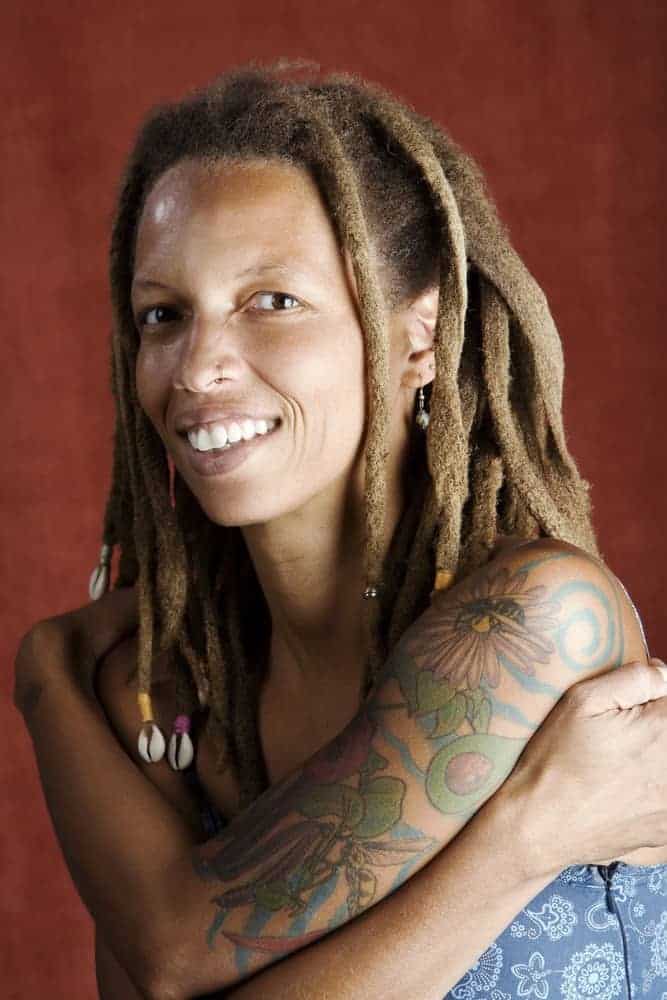
3. Chic Dreadlocks
One of the unique things about dreadlocks is that they have managed to transcend demographics, cultures, and hair types.
The fact is that dreadlocks will always differ from person to person. Certain textures will only allow the hair to partially lock, creating a unique dreadlocks hairstyle.
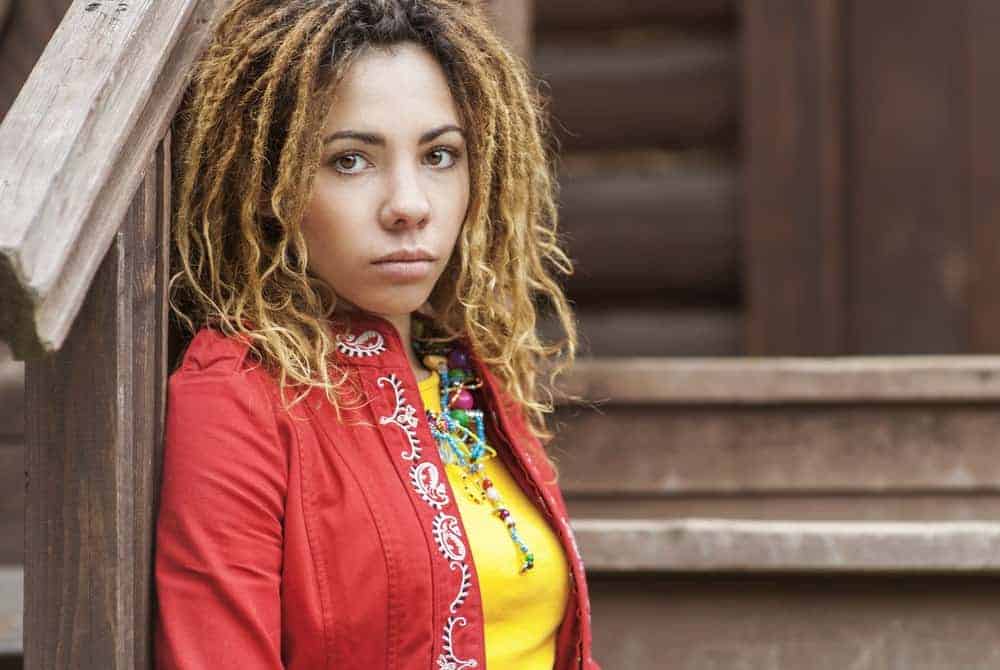
4. Short Natural Dreads
Some textures of hair tend to twist and lock more easily and naturally than others. The following is a great example of natural short dreads.
With the curl pattern, the dreads appear slightly twisted, framing the face, and providing a more defined jawline.
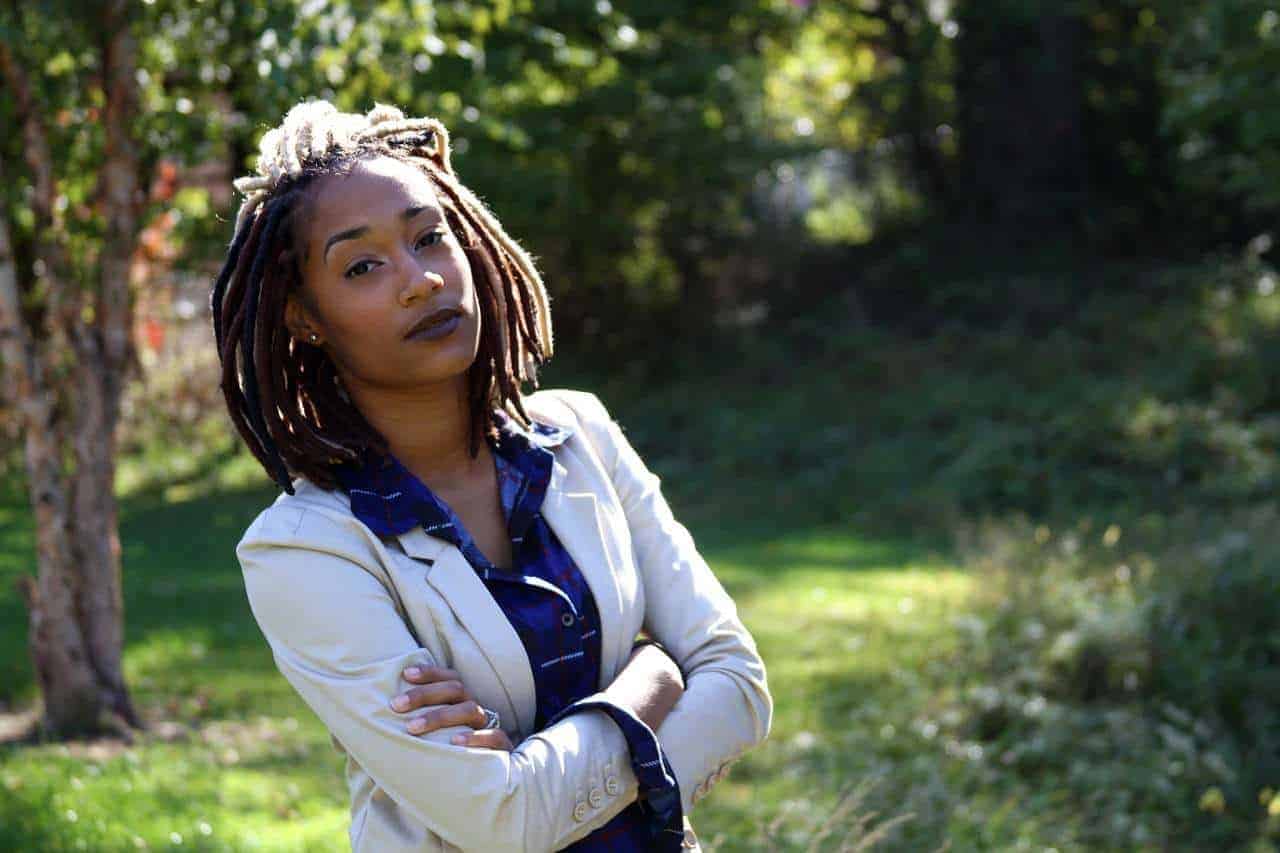
5. Long Textured Dreads on Type 4 Hair Type
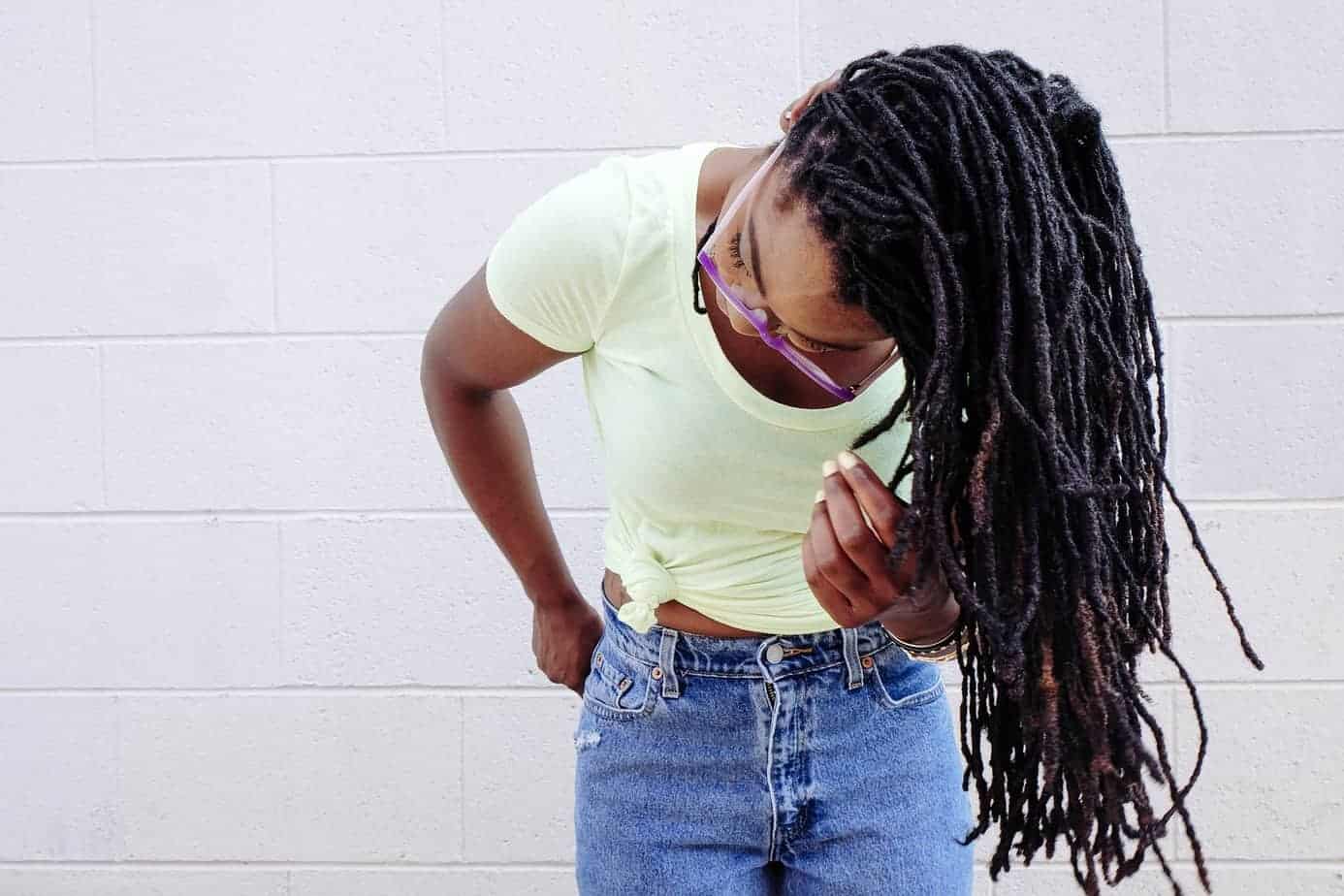
6. Young Blonde with Dreads
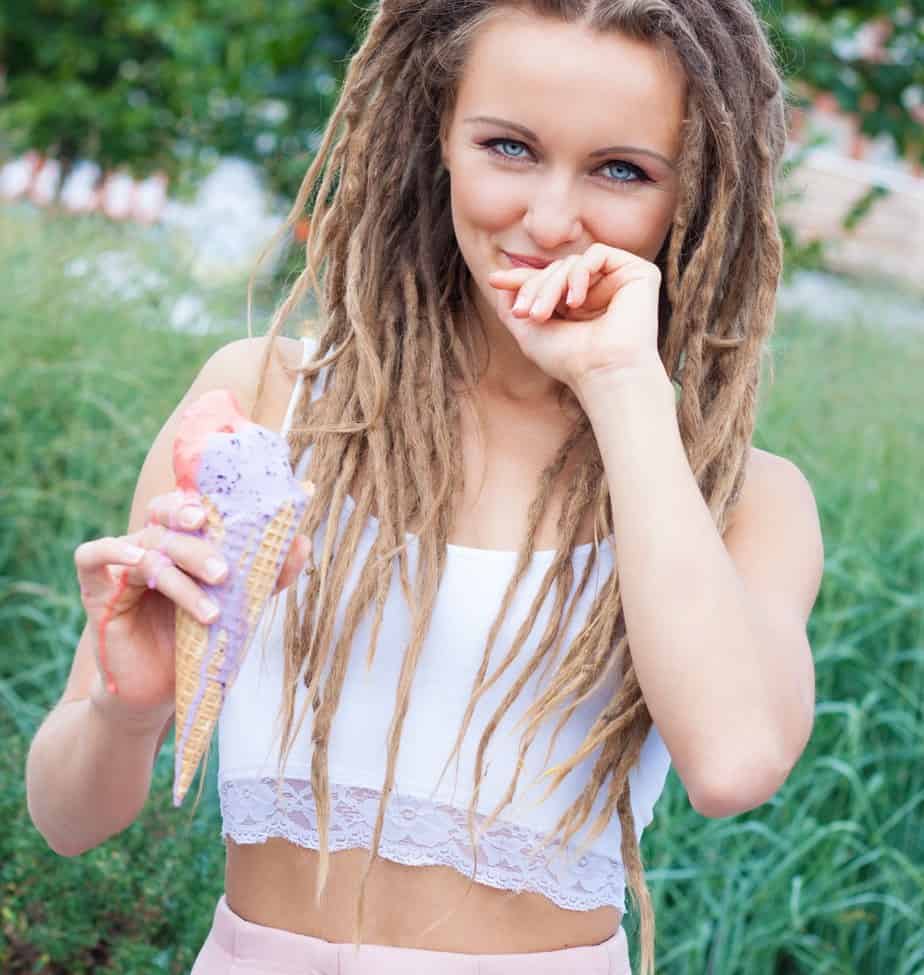
7. Free, Long Dreads on Type 1 Hair
Depending on your hair type, growing dreads may be more of a challenge. As you can see with these dreads, even if you have mostly straight hair, with some effort you can grow dreadlocks or opt for faux locs.
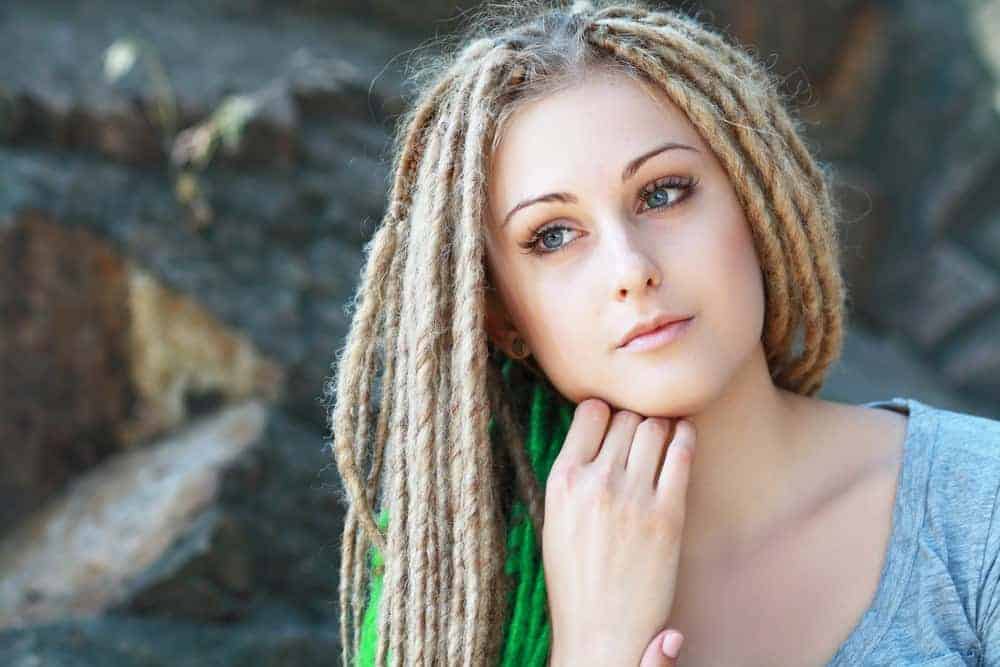
Frequently Asked Questions
What Are Dreadlocks?
On the surface, dreadlocks are “free-formed” locks of hair. There is a common misconception that dreadlocks are dirty. In reality, they are not.
The process of keeping the hair clean and in good condition is important to have healthy dreadlocks.
When the hair is left alone, and nature is allowed to take its course, the hair mats and forms as it pleases. This is referred to as “free-forming”.
Dreadlocks also have a deep affiliation with African and Rastafarian religion and lifestyle.
Note, that just as straight, curly, and short styles vary among the mass population, dreadlocks are no different. The way that a person chooses to care for their hair is a personal choice.
What Are Locs?
Locs are considered the mainstream version of dreadlocks. Locs are cultivated into a particular size and groomed/cleaned on a regular basis.
The term loc is often preferred because history shows that dreadlocks are sometimes: considered dreadful, the person wearing them is viewed as dreaded, or due to the non-religious affiliation.
Are the Terms Locs and Dreadlocks Interchangeable?
Well, it depends on who you are talking to and their preferences. I would definitely ask the person which term they prefer, out of respect to the person. We've found that the best way to avoid a sidebar discussion is to just ask someone their personal preference. However, throughout this article, the words are used interchangeably.
How Long Will It Take My Hair to Lock?
Softer textured hair generally takes longer to lock than coarse hair. Softer textures may take a year or longer to lock, while coarse hair can begin locking in only a few months.
The locking technique that is used plays a role as well. In order for the hair to lock, the hair has to mat and tangle.
How Long Does My Hair Have To Be To Start Dreadlocks?
This question depends on how you decide to start your locks. You are able to start the locing process with only a couple of months of growth – assuming that you decided to big chop.
Some techniques will allow that you to keep relaxed ends attached in the beginning and you can cut them off later. With other techniques, you may have to wait several months until you have at least 4 inches of hair.
What Is the Best Way To Make Locs Uniform?
Making locs uniform comes with technique. Ensure that you tighten your new growth using the same technique and direction each time.
If you are palm rolling, be sure to palm roll in the same direction all the time.
The goal is to keep your technique consistent. Keep in mind that each loc is different; with each potentially having different textures of hair that may not behave as the neighboring locs.
How to Size Locs or Dreadlocks?
If you have fine (thin) hair, your base should be big enough to support the starter loc. Also, keep in mind that your starter locks should be relative in proportion to your base. Generally, ¼ inch * ¼ inch may yield about the size of a standard No. 2 pencil.
Can You Remove Dreadlocks or Locs?
Yes, dreadlocks or locs can be removed. For this answer to be true, take two things into consideration: (1) the technique that was used to create your starter locks and for dreadlock maintenance and (2) how mature your locks are.
More mature locs may be more difficult to detangle than the younger portion, so you may decide to cut the oldest part off first before detangling.
Which Locking Techniques Are Easier To Take Down Later?
Comb coils, finger coils, and two-strand twists are easier to take down because the hair has not been manually woven and manually intertwined.
Can You Wash Dreadlocks?
Locs or dreadlocks should be washed at regular intervals to remove dirt and odor, just as you would loose hair. In fact, wetting the hair encourages the hair to tangle more.
What Products Should I Avoid With Dreadlocks or Locs?
Avoid beeswax and petroleum jelly. These products cause build up which attracts dirt and lint.
Avoiding creamy consistencies will help keep your locs clean of white residue. Finally, using detangling products in the early locking stages will prolong the locking process.
What Type of Products Should I Use On My Dreadlocks?
Think of your locs as a finely meshed net. The job of this net is to filter everything that you put on your hair.
As a rule of thumb, do not use products that will get visibly caught in the net. Gravitate towards oils, clear shampoos, and clear gels.
How Do I Make My Dreadlocks or Locs Grow Faster?
Keep in mind that everyone has a growth cycle that consists of four phases: anagen (growth), catagen (transition), telogen (resting), and exogen (shedding).
The best way to encourage and optimize hair growth is to eat a balanced diet, exercise regularly, and drink adequate water.
Questions To Ask the Loctician?
- What products are you using to loc my hair and to maintain it?
- What technique are you using to tighten my dreadlocks?
- Where can I purchase these products?
- What tools will be used on my hair? Take a look at the tools and ask where you can purchase them.
What Are the Most Popular Cities for Dreadlocks?
We're periodically asked about the most popular cities for wearing dreadlocks. This question is difficult to answer since our experience is entirely based on anecdotal evidence, but we'll answer to the best of our ability.
Dreadlocks have become so popular that it's pretty common to see them in most large cities. Polling our audience, some of the most popular cities and states for dreadlocks are New York City, New York, Portland, Oregon, Raleigh, North Carolina, Atlanta, Georgia, Orlando, Florida, Los Angeles, California, Houston, Texas, Richmond, Virginia, and New Jersey state.
Dreads are also very popular outside of the United States. Some of the places mentioned include Zurich, Switzerland, Newcastle, England, Toronto, Asia Minor, Canada, Paris, France, Queensland and Canberra, Australia, Caucasus, the Near East, Cork City, Ireland, East Mediterranean, Durban, Egypt, South Africa, North Africa, and Nigeria.
The Stages of Dreadlocks
The three basic stages of dreadlocks are starter locks, teenage/middle locks, and mature locks.
Oh, Your Twists Are Cute
Starter Locs: Your loc journey will begin with starter locs. Everyone will begin here regardless of the technique chosen.
This stage will not resemble “mature” locs yet, and it may go undetected that you have actually chosen to pursue a dreadlock journey.
Important elements will take place during this stage within your locs. When your starter locs are first installed, there aren’t any knots, tangles, or matting taking place at the time.
However, over the next few months, as your hair is allowed to “set”, the inner strands of the hair will begin to naturally knot and tangle.
Congratulations! You have knots or buds.
Knots or Buds: Knots are a very important step in your locing journey. Knots occur when your hair begins to loc and this is how it starts. Think of these knots as a seed that has been planted.
On the outside, the hair is continuingly wrapping itself around neighboring strands of the starter locs.
This intertwining creates sort of a cocoon for the inter knots that will expand as your dreadlocks mature. Be sure to continue to handle your starter locs with care as they are still getting “set” in their ways.
Oh, You’re Locing?
Teenage locs/ Middle stage: I like to think of this stage as the middle stage. Your locs are not really starter locs anymore but they are not mature locs, either. They are sort of caught in the middle and they are searching for their way.
Each locing experience will be different depending on the individual’s mindset about the events that are going to take place during this stage of the journey.
At the same time, due to the expanding of the internal knot(s) and the tightening of different strands of hair that are pulled as the knot(s) tighten, the dreadlock(s) will stand up and/or out appearing to be shorter and unruly and will no longer lay flat with the others. This is the stage where the locs show their personality.
Frizz is another major element of this stage. You may have the urge to beat the frizz by continually twisting the locs but don’t!
This is only a short-term fix, creating a disastrous future of thinning locs and a weak base.
Accept this is a part of the journey and you can use this time to experiment with head wraps. This stage is really about letting your hair naturally do what it wants to do. Before this stage is over, your locks will lay flat and hang more – showing signs of growth.
I like your locs!
Mature: The outer cocoon that was taking shape in the knots or buds stage is formed and completely encases the internal knots that have now encouraged internal matting in the inside, and bye, bye frizz!
Some loc wears will not have sealed ends, but instead, they will have a coil. Just like the coil or tendril at the end of their twists. The locs are taking shape and should no longer resemble the old starter locs. They are heavier, which makes them lay flat vs. standing out as in the teenage/middle stage.
9 Critical Dreadlock Tips
- To make a nice secure twist that will not unravel, be sure to twist each piece of hair tautly around the other by using your fingertips. Attempt to get as many revolutions as possible. Also, ensure that ample holding product is applied as well. Use metal clips to secure the twist at the base.
- Twisting on dry hair can cause hairs to snap.
- Once you reach the end of the twist and wrap it around your finger to secure the ends. Next, if you are unable to create a coil on the end, try creating a pin swirl with your fingers and secure it with a metal clip.
- Using conditioner is taboo when it comes to dreadlocks; however, it is a needed product to help keep the hair strands in their best condition. Also, keep in mind, that the ends of the hair are the oldest and need the most care. Using creamy conditioners in locs, especially starter locs, is not recommended; however, the ends of the hair must be taken care of. Try using a finishing rinse on the ends. This will help keep the oldest part of your hair conditioned. We recommend using Aubrey Organics Green Tea Finishing Rinse.
- Never use beeswax or grease (petroleum jelly) on your locks. These ingredients cause buildup, and they attract lint and dirt.
- When washing your hair, wear a stocking cap- this will help maintain the integrity of your starter locks.
- Reduce lint in locs after washing by using a dark-colored microfiber towel. This way, the lint will be black or dark colored and not white, which is more visible.
- Twisting too tight or too frequently can thin or weaken the base of the lock. You will need to experiment to find the right length of time that you are able to go between each retightening session. If you find that you have signs of distressed hair, you will need to evaluate your method and technique that will preserve your delicate tress.
- During the teenage/middle stage of your loc journey, where your hair may not be willing to cooperate, tie your hair down at night and/or where an updo whenever possible.
What Are Fake Dreads Called?
Fake dreads are often called dread extensions, artificial dreads, or faux locs. These are hair extensions that mimic the look of natural dreadlocks but are not made by the traditional methods of twisting and locking the hair. Synthetic dreads are a popular alternative for those who want the dreadlocked look without the commitment of growth and maintenance.
What Are Braided Dreads Called?
Braided dreads are often called braided locs, braided dreadlocks, or simply locs. They are created by braiding the hair instead of twisting it. The braids are then left to mature and dread over time, creating a unique and textured look. If you want a temporary low-maintenance alternative to traditional dreadlocks, then braided dreads are a great choice.
What Are the Beads in Dreads Called?
The beads that are used to adorn dreadlocks are called dread beads or loc beads. They are small, cylindrical beads that are slipped onto the ends of dreadlocks, adding a decorative touch and helping to secure the ends of the dreads in place. They're a popular way for people with dreadlocks to express their personal style.
What Are Congo Dreads?
Congo dreads are a unique type of dreadlocks that form when the roots of two or more dreads naturally merge together. This type of dreadlock is usually a thicker and more densely packed section at the root. Congo dreads can form naturally over time or can be created using various methods, such as braiding or twisting the hair.
What Are Wick Dreads?
Wicks dreads are about the thickest kind of dreadlocks. They're made by twisting synthetic hair fiber (Kanekalon/Toyokalon) into dreadlock-like shapes. The name "wicks" refers to the wicking or twisting process. The synthetic fibers used for wicks dreads are lightweight, durable, and heat-resistant, making them a popular choice for people looking for a low-maintenance alternative.
What Are Freeform Dreads?
Freeform dreadlocks (aka "neglect" dreadlocks) are formed without the use of any specific methods or techniques. They are created by simply allowing the hair to grow naturally without brushing, combing, or manipulating it. Some natural products can be used to help twist them. Over time, the hair will begin to knot and tangle on its own, eventually forming dreadlocks.
What Are Small Dreads Called?
Small dreadlocks are simply dreadlocks that are smaller than larger, robust dreadlocks. They can range in size from thin, wispy locs to chunky, compact locs that are just a few inches in length. Small dreadlocks are often favored by people who prefer a more understated, minimalist look or who want to create a delicate style.
What Are Partial Dreads?
With partial dreadlocks, also known as half dreads or partial locs, only a portion of the hair is styled into dreadlocks. They're typically created on the crown of the head, while the rest of the hair remains loose. They're perfect if you want to experiment with dreadlocks without the commitment or if you prefer a more versatile, mixed-textured look.
What Are Florida Dreads Called?
Florida dreads, also known as wicks dreads, are a type of dreadlocks that originated in South Florida. They are characterized by their thick, sturdy, and well-defined locs that resemble thick, braided ropes. The popularity of wick-style locs has grown in recent years, and they are now widely recognized as a distinctive and stylish hair trend.
What Are the Metal Things on Dreads?
The metal items often seen on dreadlocks are called dreadlock beads or dread beads. They are placed on the tips of dreadlocks to add weight and accentuate their shape. Dread beads come in a variety of materials, including metal, wood, and plastic, and can be decorated with gems, beads, or other embellishments.
- Different Ways To Start Dreadlocks
- Are Dreadlocks Dirty Hair
- Why Do My Dreads Smell
- Starting Locs With Two Strand Twists
- How Much Do Starter Locs Cost?
How to Get Dreadlocks
Hair Texture and Length: Why is the texture of your hair important for dreadlocks? The texture of your hair is the best indicator of which technique you should choose and how long it can take for your hair to lock.
Generally, softer textured hair takes longer, as long as a year, and coarser textured hair can lock in as little as a few months.
Curly, kinky, coily hair naturally twirls and tangles around the neighboring hair strands. This natural action is the key component to creating dreadlocks. If a person with naturally curly hair chooses not to comb their hair for a period of time, nor use any type of detangling product, their hair would lock effortlessly – on its own.
Does length really matter? You can begin your starter locks with as little as an inch of hair (that’s two months of growth, on average) with certain methods.
For shorter hair, a locking tool will be needed to coax a coil pattern that will eventually morph or transform into a lock. If the hair is at least a few inches long, the fingers can be used, and no tools are required. When the hair is long enough to grab and manipulate, the locking method is different.
Starter Locks: Starter locks are just that – they are the beginning babies that will transform and morph. Think of starter locks as two-strand twists that are purposely installed with the intention of allowing them to mat and form into mature locks or dreadlocks.
Always wash your hair with a clarifying shampoo like Giovanni Triple Treat Clarifying Shampoo or Kinky Curly Knot Today to start with a clean slate and remove any product build-up or oil from your hair strands. Do not apply thick, creamy conditioners to the hair, as this will cause build-up. Instead, use a hair rinse like Aubrey Organics Green Tea Finishing Rinse.
Never, under any circumstance, Back Comb or use Beeswax on your delicate tresses. Backcombing is never necessary for kinky, curly, or coily hair, and Beeswax causes buildup.
The base for starter locks = dreadlock size: Deciding on the base or how big the sections will be is important for two reasons: a good base provides a strong foundation for the lock and is a determinant for the size of the lock. Think of the base, just as you think of a foundation for a house.
The foundation provides strength and stability to the structure of the house. If the base is weak, eventually, it will thin, and due to the weight of the lock, the lock can fall off.
So to prevent this from happening, choosing a base size that will support the weight of the locks is the best practice of preventive maintenance.
A large base does not necessarily mean better. However, choosing the size that is proportionate with your desired thickness (size) of locks is more ideal.
Understanding the thickness of your hair before you start creating your base will prove to be an invaluable piece of knowledge as you start your starter locks.
If your base appears to be considerably bigger than the twist, where the twist looks too skinny or too thin compared to the base, make the base smaller in proportion to the thickness (size) of the twist.
How to part your hair for starter locks:
Parting is when you use a smooth rounded tip (ex., the tail/handle of a comb) to draw a line in your hair and separate it into sections. This line can be straight, curved, or designed and any length.
Parting can also be done with your fingers, but using this method creates a less defined line and uneven sections of hair.
The best practice technique, when creating parts for the dreadlock base, is to work in sections and in rows, regardless if you are using your fingers or a comb.
- Place the rat-tail comb firmly behind your ear; glide the tail of the comb up and across your scalp to the opposite side. This step creates two sections of hair from ear to ear.
- Use a duck bib clamp or ouchless bands to secure the front section of hair.
- Working with the hair that is loose in the back, place the tail of the rat-tail comb along the hairline, at the base of your neck in the center and move the comb upward until the middle part is reached. This step creates two sections (a left and right section) using the loose hair in the back of your head. You should now have three sections: front, left-back, and right-back.
- Use a duck bib clamp or ouchless bands to secure the hair on the left side.
- Place the tail of the rat-tail comb ¼ inch or your desired height from the base of your hairline. Glide the comb straight across to the opposite side. Congrats, you have created the first row for your locks.
- Use a duck bib clamp or ouchless bands to secure the loose hair, so only your first row is loose.
- Working with the loose section only, part a ¼-inch wide vertical line (or your desired width), near your right your ear. This will create a box that will eventually mature into a beautiful, healthy lock.
- Use your desired technique to create your starter locks (ex., Two Strand Twists)
- Once you complete the first starter lock, return to step seven to create another box for the next twist. Steps seven and eight will be repeated until all the loose hairs are starter locks.
